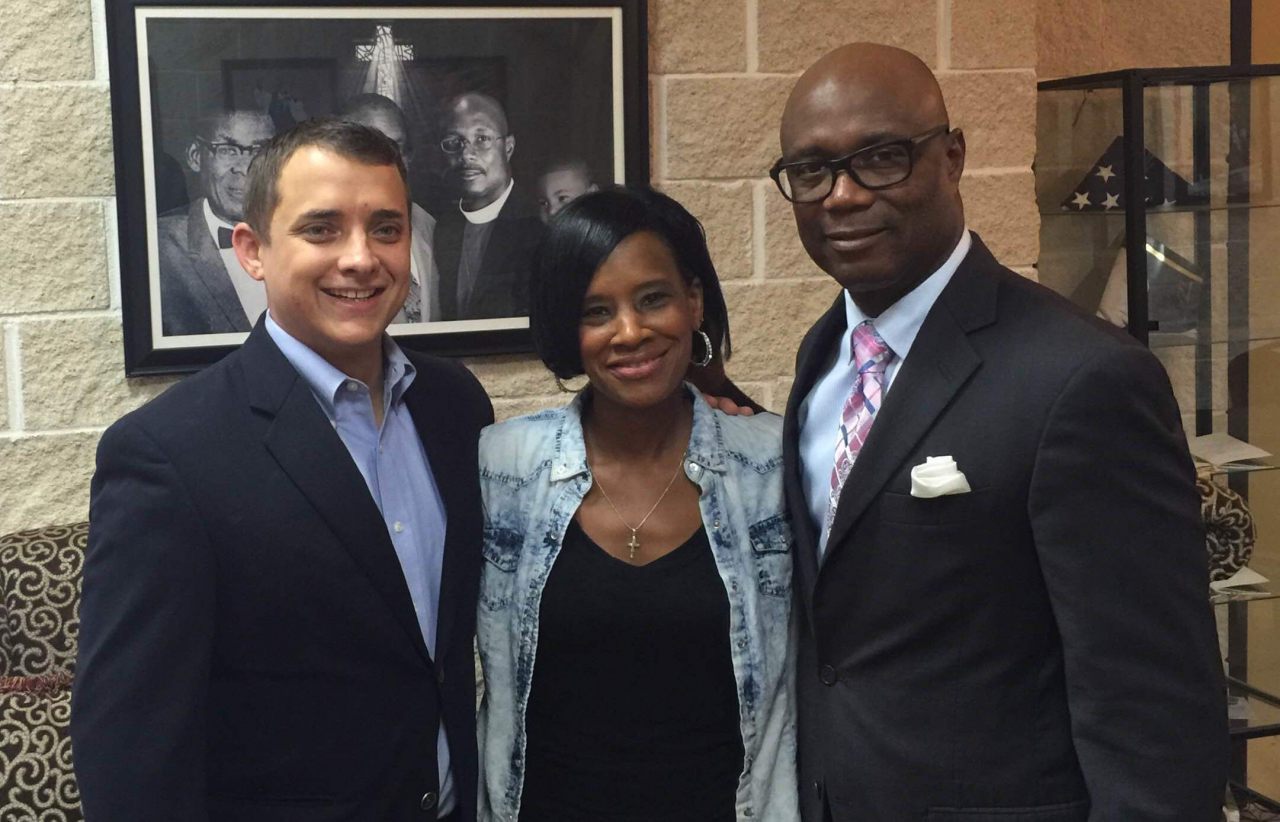 The gay community is not joking about sensitivity issues anymore. The Time is NOW. The black woman who has religious convictions is making headlines. The teacher in Houston didn’t abide by the new guidelines for addressing a transgender student as a boy… And was fired!
The gay community is not joking about sensitivity issues anymore. The Time is NOW. The black woman who has religious convictions is making headlines. The teacher in Houston didn’t abide by the new guidelines for addressing a transgender student as a boy… And was fired!Church vs. State: Houston Teacher Fired For Not Calling Transgender Student a “Boy”
 The gay community is not joking about sensitivity issues anymore. The Time is NOW. The black woman who has religious convictions is making headlines. The teacher in Houston didn’t abide by the new guidelines for addressing a transgender student as a boy… And was fired!
The gay community is not joking about sensitivity issues anymore. The Time is NOW. The black woman who has religious convictions is making headlines. The teacher in Houston didn’t abide by the new guidelines for addressing a transgender student as a boy… And was fired!Separation of Church and State
The separation of church and state is a concept defining the distance in the relationship between organized religion and the nation state. It may refer to creating a secular state, with or without explicit reference to such separation, or to changing an existing relationship of church involvement in a state (disestablishment).
Although the concept of separation has been adopted in a number of countries, there are varying degrees of separation depending on the applicable legal structures and prevalent views toward the proper relationship between religion and politics. While a country’s policy may be to have a definite distinction between church and state bodies, there may be an “arm’s length distance” relationship in which the two entities interact as independent organizations. A similar but typically stricter principle of laïcité has been applied in France and Turkey, while some socially secularized countries such as Denmark and the United Kingdom have maintained constitutional recognition of an official state religion.[1] The concept parallels various other international social and political ideas, including secularism, disestablishmentarianism, religious liberty, and religious pluralism. Whitman (2009) observes that in many European countries, the state has, over the centuries, taken over the social roles of the church, leading to a generally secularized public sphere.[2]
The degree of separation varies from total separation mandated by a constitution, as in India and Singapore; to an official religion with total prohibition of the practice of any other religion, as in the Maldives.
U.S. Supreme Court Decisions
(arranged by date)
Reynolds v. United States, 98 U.S. 145 (1879)
Court finds that the federal antibigamy statute does not violate the First Amendment’s guarantee of the free exercise of religion.
Everson v. Board of Education, 330 U.S. 1 (1947)
Court finds that a New Jersey law which included students of Catholic schools in reimbursements to parents who sent their children to school on buses operated by the public transportation system does not violate the Establishment Clause of the First Amendment.
McCollum v. Board of Education Dist. 71, 333 U.S. 203 (1948)
Court finds religious instruction in public schools a violation of the establishment clause and therefore unconstitutional.
Burstyn v. Wilson, 72 S. Ct. 777 (1952)
Government may not censor a motion picture because it is offensive to religious beliefs.
Torcaso v. Watkins, 367 U.S. 488 (1961)
Court holds that the state of Maryland cannot require applicants for public office to swear that they believed in the existence of God. The court unanimously rules that a religious test violates the Establishment Clause.
Engel v. Vitale, 82 S. Ct. 1261 (1962)
Any kind of prayer, composed by public school districts, even nondenominational prayer, is unconstitutional government sponsorship of religion.
Abington School District v. Schempp, 374 U.S. 203 (1963)
Court finds Bible reading over school intercom unconstitutional and Murray v. Curlett, 374 U.S. 203 (1963) – Court finds forcing a child to participate in Bible reading and prayer unconstitutional.
Epperson v. Arkansas, 89 S. Ct. 266 (1968)
State statue banning teaching of evolution is unconstitutional. A state cannot alter any element in a course of study in order to promote a religious point of view. A state’s attempt to hide behind a nonreligious motivation will not be given credence unless that state can show a secular reason as the foundation for its actions.
Lemon v. Kurtzman, 91 S. Ct. 2105 (1971)
Established the three part test for determining if an action of government violates First Amendment’s separation of church and state:
1) the government action must have a secular purpose;
2) its primary purpose must not be to inhibit or to advance religion;
3) there must be no excessive entanglement between government and religion.
Stone v. Graham, 449 U.S. 39 (1980)
Court finds posting of the Ten Commandments in schools unconstitutional.
Wallace v. Jaffree, 105 S. Ct. 2479 (1985)
State’s moment of silence at public school statute is unconstitutional where legislative record reveals that motivation for statute was the encouragement of prayer. Court majority silent on whether “pure” moment of silence scheme, with no bias in favor of prayer or any other mental process, would be constitutional.
Edwards v. Aquillard, 107 S. Ct. 2573 (1987)
Unconstitutional for state to require teaching of “creation science” in all instances in which evolution is taught. Statute had a clear religious motivation.
Allegheny County v. ACLU, 492 U.S. 573 (1989)
Court finds that a nativity scene displayed inside a government building violates the Establishment Clause.
Lee v. Weisman, 112 S. Ct. 2649 (1992)
Unconstitutional for a school district to provide any clergy to perform nondenominational prayer at elementary or secondary school graduation. It involves government sponsorship of worship. Court majority was particularly concerned about psychological coercion to which children, as opposed to adults, would be subjected, by having prayers that may violate their beliefs recited at their graduation ceremonies.
Church of Lukumi Babalu Ave., Inc. v. Hialeah, 113 S. Ct. 2217 (1993)
City’s ban on killing animals for religious sacrifices, while allowing sport killing and hunting, was unconstitutional discrimination against the Santeria religion.














